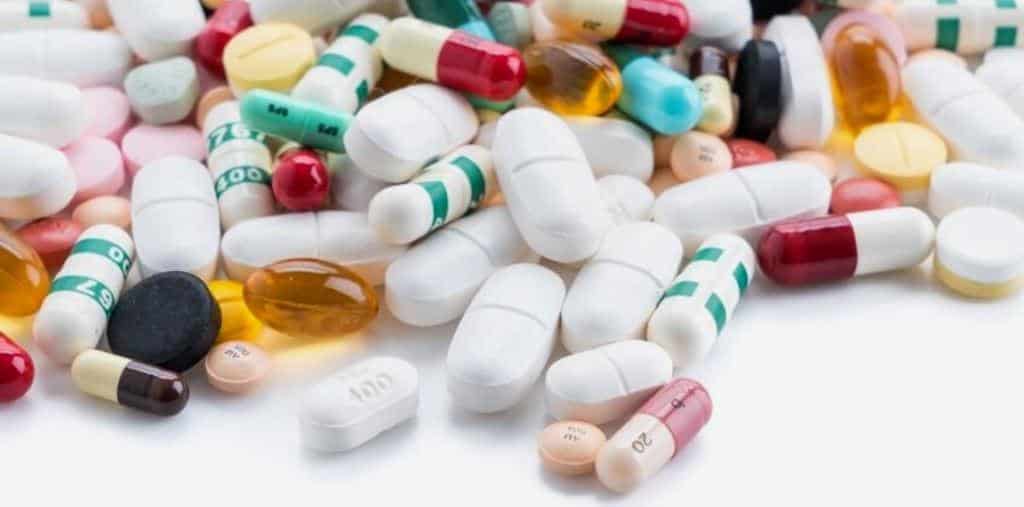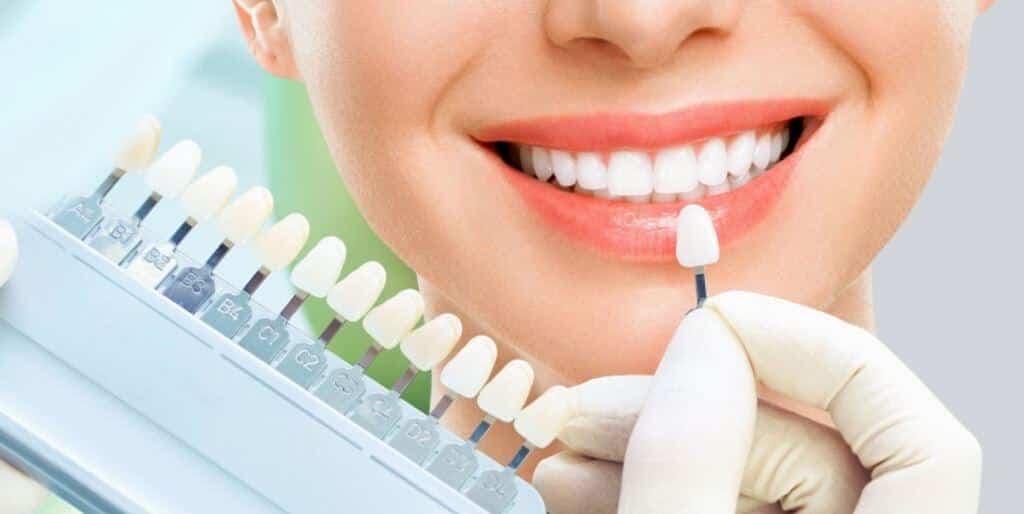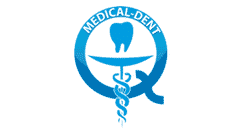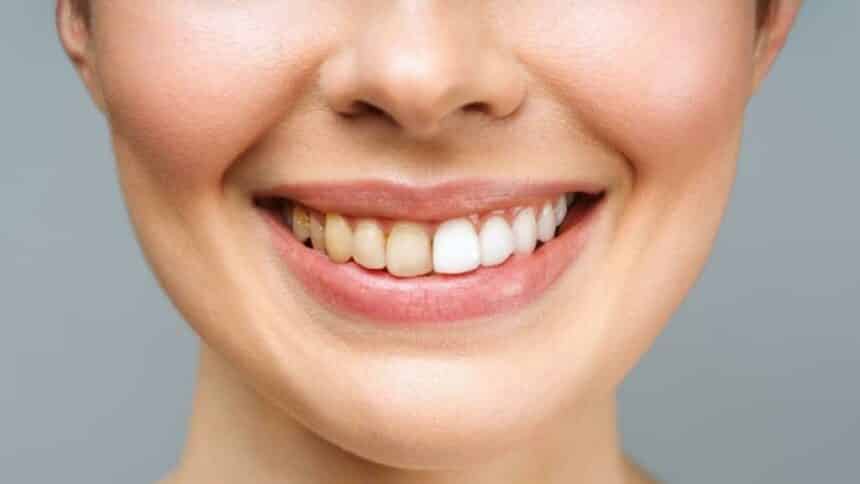Even a small spot on your teeth can make you stop smiling widely. That's why it's best to prevent tooth discolouration and avoid the factors that cause it. But what if you are already struggling with them and how quickly can you enjoy a beautiful smile again?
Problematic enamel, or what determines the colour of your teeth?
Although you look after your teeth, visit the dentist's office regularly and even use whitening trays, you may not be able to achieve a snow-white smile. The problem may be the natural shade of your teeth, or more specifically the thickness of the enamel that covers the dentin.
The tooth is usually yellow, thus the thinner the enamel layer the whiter the shade of the teeth. Tooth colour is also influenced by age, race and genes. We wrote more about this topic in our article "What tooth colour depends on", so if you are interested in this topic we invite you to read on. On the other hand, if you want to find out how genes affect your teeth, we recommend the text "Grandma's smile, or how genes affect teeth".
Whatever the colour of your teeth, stains can appear on them. And what exactly are they? Tooth discolouration is nothing more than a discolouration of the enamel. Indeed, they can be individual spots, but also the entire tooth can change colour.
And where does this come from?

Discolouration on your teeth that you can avoid
Among the first of these is food. Everything we put in our mouths has natural or artificial pigments that can affect the enamel. And so drinking lots of black coffee, tea or red wine will definitely affect the colour of your teeth. So will eating large quantities of berries, blueberries, beetroot, curry or turmeric.
Magnitude and intensity of staining on teeth when eaten largely depends on the amount and frequency of food consumed, as well as on oral hygiene. Importantly, if a change in the colour of the teeth appears, caused by the above factors, it is most often easily removed during hygiene.
We remind you that this one should take place at least once every six months. In addition to removing any discolouration and tartar, the dentist can check the condition of your mouth during the procedure. And what exactly it consists of - you can find out in our article "Dental hygiene in the UK - scaling, tooth sandblasting, polishing and fluoridation".
IMPORTANT: Remember if you have eaten citrus fruit do not brush your teeth right away, rinse them with water and wait a minimum of half an hour. Otherwise, you are only rubbing in acids that damage the enamel exposing it to discolouration.
Another of the factors that causes discolouration on teeth is smoking. Teeth are then usually brown or black in colour. This is caused by tarry substances that are deposited on the teeth and discolour the enamel. Unfortunately, in this case teeth whitening has a short-lived effect unless the person quits smoking.
As we have already mentioned, for discolouration on teeth is also influenced by good oral hygiene. What exactly does this mean? Brushing your teeth after every meal (the necessary minimum is twice a day), flossing (how to do this and why it is so important you will read HERE), the use of mouthwash and regular visits to the dentist. This will make the tooth more protected and thus make it harder for the staining compounds to stick to the tooth.

Discolouration beyond your control
Among the factors causing discolouration of the teeth are also those over which you have no control. These include diseases such as hypothyroidism and hyperthyroidism, porphyria, hyperbilirubinaemia or fluorosis (read more about this in the article "Does fluoride in toothpaste harm"). Teeth may then discolour to a bluish white, reddish grey or even greenish colour.
Medications taken are also important. Enamel colour is strongly affected by antibiotics from the tetracycline group, which cause yellow and brown discolouration in the gum area. Medications used for allergies, hypertension or heart disease, as well as those used in psychiatric treatment, also have an impact.

How to remove stains on teeth
Clearly, prevention is better than cure, but as we wrote earlier, you won't always have control over the colour of your teeth. If you are struggling with discolouration on your teeth, it is best to make an appointment with your dentist. He or she will choose the most optimal option for you.
And what will you be able to choose from?
Firstly is the aforementioned hygienization. You may find that the treatment will fully remove the stains on your teeth.
If not, you can opt for teeth whitening. Depending on your needs, the effect you want to achieve and your budget, you can choose to have your teeth whitened at home or in the office, or both options at the same time. At our practice, we use the Enlighten system for this purpose. The treatment takes 2 weeks and the effect lasts for many years. You can find out how this is possible and what the full treatment looks like in our article "Enlighten teeth whitening - a snow-white smile in 2 weeks". And if you want to know other options to get a white smile we recommend you our text "Teeth whitening in the UK - prices and possible options".
Surely you are asking yourself, what is the cost? A kit for at-home tray teeth whitening costs £250, whereas teeth whitening in the Enlighten system costs £550. IMPORTANT! In our office you do not have to pay the full amount at one time, you can spread it over instalments convenient for you. Thus, for whitening to B1, i.e. the whitest of whites (this is the effect of the Enlighten system), you will pay only £46 per month.
If you want to find out how our instalment system works (it is regulated by the Financial Conduct Authority - FCA number 619628) read our article "Teeth on credit: dental treatment on hire purchase", or Call to us.
NOTE: Some people try to remove discolouration with home remedies. Before you decide on one yourself, be sure to read our article "Home remedies for teeth whitening - pros and cons". Some of them not only fail to whiten teeth, but can seriously damage the enamel.
What if whitening doesn't make sense? Then you will still be able to enjoy a beautiful and white smile, but you will have to opt for veneers. This is a type of tray that is bonded to the tooth. It is a more expensive solution but with veneers you can change not only the colour of your teeth, but also their shape. You can read more about this in our article "Dental veneers in the UK. Everything you need to know".
As always, if you have any questions you are welcome to contact.

